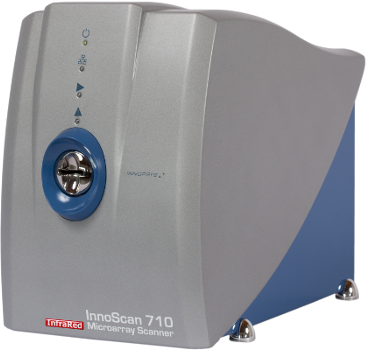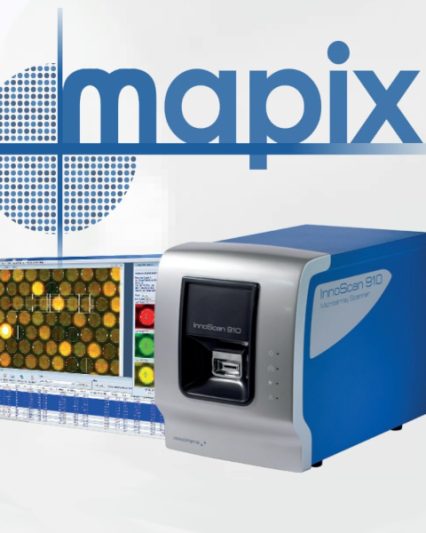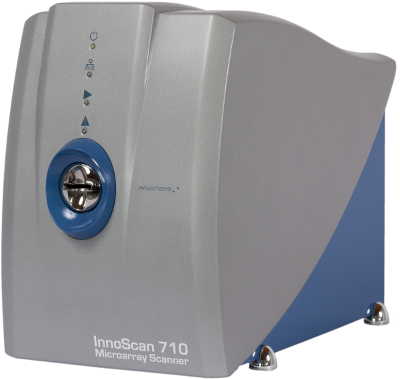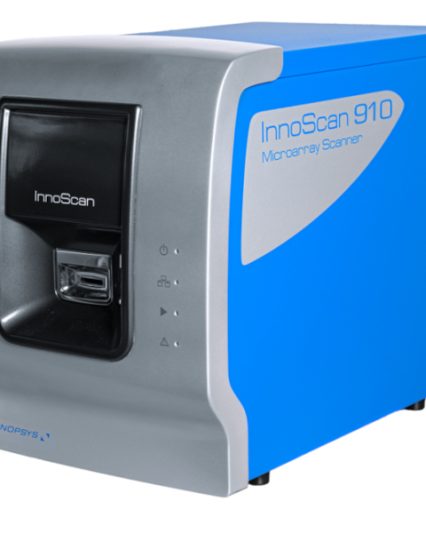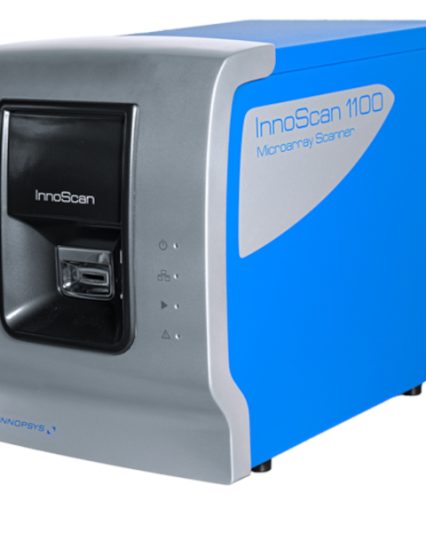Product information
- Increased sensitivity of protein microarrays through infrared fluorescence detection: With its two excitation sources in the near-infrared spectrum (670nm and 785nm), it is possible to read slides with nitrocellulose or PVDF substrates without the problem of autofluorescence, caused by these supports. This results in increased sensitivity of the tests by significantly increasing the signal to background noise ratio.
- Real-time autofocus optimized for nitrocellulose or PVDF substrates: The Innoscan 710-IR scanner uses a real-time autofocus system that produces perfect homogeneity across the entire reading surface. A special configuration made for the program, Mapix, allows users to adapt the autofocus system to nitrocellulose or PVDF formats.
- Speed: With an adjustable reading speed from 10 to 35 lines per second, users can get test results very quickly (4 minutes to read an entire slide at resolutions of 10 µm/pixel).

